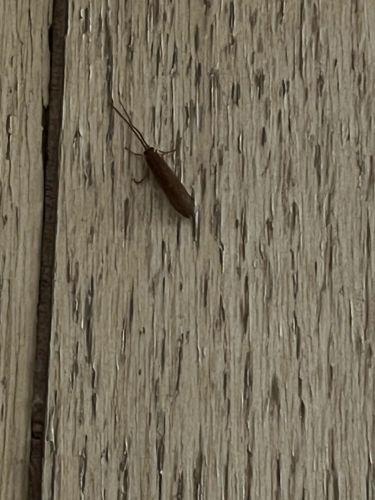Casebearer moth (likely a Clothes Moth relative)
Scientific Name: Tineidae (family), exact species difficult to determine from image alone
Order & Family: Lepidoptera (Order), Tineidae (Family)
Size: Typically 5-15 mm (0.2-0.6 inches) in length, wingspan varies.

Natural Habitat
Indoors, often found in closets, attics, storage areas, or anywhere natural fibers (wool, silk, fur, feathers) or dried food products are stored. Larvae create a silk case covered with debris.
Diet & Feeding
Larvae feed on natural fibers such as wool, fur, silk, felt, feathers, and sometimes dried plant materials or food products. Adult moths generally do not feed.
Behavior Patterns
Adult moths are often weak flyers and prefer dark, undisturbed areas. They are primarily nocturnal or crepuscular. The most damaging stage is the larval stage, where they construct and carry a silken case, enlarging it as they grow. They are known for damaging textiles and stored goods.
Risks & Benefits
Risks: Significant pests of stored products and textiles, causing damage to clothing, carpets, furs, and other natural fiber items. No direct benefits to humans or ecosystems, as they are considered a nuisance pest.
Identified on: 9/22/2025